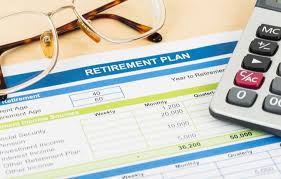Workers used to be able to rely on an employee pension plan and Social Security to fund their expenses throughout their golden years. Pensions are becoming increasingly rare, and Social Security is not a sure thing for future generations.
That is why Uncle Sam wants you to save for retirement and provides tax benefits on retirement accounts. Here’s how to select the best retirement plans to help you save for the future. Employer-sponsored plans, individual retirement accounts, and plans for self-employed individuals and small businesses will all be discussed.
Best Individual Retirement Plans
Everyone does not have access to an employer-sponsored retirement plan. Even if you have a workplace retirement plan, such as a 401(k), you may wish to save more money than the yearly 401(k) contribution limits. Individual Retirement Accounts (IRAs) and annuities are two of the greatest retirement plans for saving on your own if this is the case.
#1. IRA (Traditional IRA)
A typical IRA can be opened by anyone with taxable income. If you don’t have a workplace retirement plan, donations to a standard IRA are normally tax-deductible. Contributions to a traditional IRA can be invested in a variety of assets, including mutual funds and exchange-traded funds (ETFs), and investment earnings are tax-deferred. Your IRA payouts are taxed as ordinary income if you begin withdrawing beyond the age of 59 1/2.
You can contribute up to $6,500 to a regular IRA in 2023. If you are 50 or older, you may contribute up to $7,500.
#2. Roth IRA
A Roth IRA is one of the best retirement accounts available if your annual income isn’t too large. While Roth IRA contributions are not now tax deductible, you will not have to pay income taxes on withdrawals once you retire. Furthermore, you can withdraw funds from a Roth IRA before retirement without penalty, so a Roth IRA can also serve as an emergency fund in a pinch.
The total annual Roth IRA contribution limits are the same as for traditional IRAs, but there are income thresholds that limit who can contribute directly to a Roth IRA: in the tax year 2023, you can only contribute directly to a Roth IRA if you earn less than $153,000, or less than $228,000 if you’re married and file a joint tax return.
#3. Spousal IRA
A spousal IRA is not a unique sort of individual retirement account. Rather, it is a strategy that married couples can employ to optimize their retirement savings through the use of an IRA.
If you’re married and one of you doesn’t work or earns much less than the other, you can save more for retirement with a spousal IRA. The non-working spouse can start a regular or Roth IRA in their own name and contribute according to their household income. Normally, you are only allowed to contribute the amount that you, not your household, earn in a year.
The ability to form another IRA and contribute to it fully allows some married couples to double their IRA retirement savings each year.
#4. Fixed Annuities Payments
A sort of insurance contract that might augment your retirement funds is an annuity. There are many different types of annuities to select from, but we believe that fixed annuities are the best option for you.
Fixed annuities are simpler to understand and compare to other types of annuity contracts, such as indexed or variable annuities. Fixed annuities typically provide consistent payouts, tax-deferred growth, and, in some situations, a death benefit payable to a beneficiary if you die.
In addition, unlike other retirement plans, annuities are not subject to IRS contribution limits, so you can put as much money into your future as you like.
Best Employer-Sponsored Retirement Plans
One of the most valuable employment advantages is your employer-sponsored retirement plan.
If your employer offers a retirement savings plan, you should almost surely participate because it can really assist you restart your retirement savings. However, where you work will influence your retirement alternatives.
#1. Traditional 401(k) plans
If your employer has a 401(k) plan, you can contribute to it with pre-tax cash. Your assets grow tax-deferred, which means you don’t have to pay taxes on what you invest or its gains until you withdraw them in retirement.
Employers might encourage employees to contribute to their 401(k) plans by matching a part of their contributions up to a certain percentage of their salary.
The contribution limit for 401(k) accounts in 2023 is $22,500, or 100% of your salary, whichever is less. If you are 50 or older, you can make an additional $7,500 catchup payment. Contributions from employers do not count toward this limit.
Nota bene: If your employer has a 401(k) plan, the minimum age to participate cannot be greater than 21 and participation cannot require more than a year of employment.
#2. Roth 401(k)
Many employers include a Roth 401(k) option in their 401(k) plan. Contributions to a Roth 401(k) are after-tax dollars rather than pre-tax dollars, and withdrawals in retirement are not taxed as income.
Contribution restrictions for Roth 401(k) accounts are the same as for standard 401(k) funds. If your company matches 401(k) contributions and you contribute to a Roth 401(k), you are still eligible for the match. However, due to federal laws, it will be deposited into a standard 401(k) for you.
The key to picking between a Roth and a standard 401(k) is identifying when you feel your taxes will be lower: now, while you’re contributing to your 401(k), or later when you’re withdrawing in retirement.
Contribute to a typical 401(k) plan to benefit from lower taxes on withdrawals in retirement if you believe your income taxes are higher today. If you believe you will be in a lower tax bracket today than you will be in retirement, a Roth 401(k) plan is a better option for the time being.
#3. 403(b) plan
A 403(b) plan may be available if you work for a public school or a non-profit organization. If you are qualified, you make pre-tax contributions from your paycheck, and your money grows tax-free until you withdraw it in retirement. Some 403(b) plans allow Roth accounts, which function similarly to Roth 401(k)s.
The contribution limit for 403(b) accounts in 2023 is $22,500 or 100% of your salary, whichever is less. Catchup contributions allow you to donate an additional $7,500 every year if you are 50 or older. Employers, like 401(k) plans, may make contributions to your account.
Employees who have worked for the same qualifying company for at least 15 years are eligible for bonus catch-up contributions of $3,000 per year, up to a lifetime total of $15,000.
#4. 457(b) plan
If you work for a state or local government, you may be able to save for retirement through a 457(b) plan, which allows you to invest pre-tax money from your salary in your retirement account.
Because the account is tax-deferred, you don’t have to pay taxes on your contributions or earnings until you start taking withdrawals in retirement. Some 457(b) plans allow Roth accounts, which function similarly to Roth 401(k)s.
You can contribute up to $22,500 per year in 2023, or 100% of your salary, whichever is less. Employees over the age of 50 may contribute an extra $7,500 catchup contribution.
457(b) plans allow you to contribute up to double the yearly limit or 100% of your pay in the three years before retirement, whichever is less.
#5. Thrift Savings Plan
The Thrift Savings Plan (TSP) is exclusively available to federal employees and members of the armed forces. TSP accounts function in the same way as corporate 401(k) plans. You can make pre-tax contributions to a TSP, and your money will grow tax-free until you withdraw it in retirement. Some TSPs provide Roth accounts that function similarly to Roth 401(k)s.
The TSP yearly contribution cap is $22,500 in 2023. You can contribute an additional $7,500 if you are 50 or older.
How Do Defined Benefit Plans Work?
Defined benefit plans, often known as pension plans, were once very prevalent but are becoming increasingly scarce. According to a Willis Towers Watson survey, only 14% of Fortune 500 companies offered defined-benefit plans to new hires in 2019, down from 59% in 1998.
Employees in a defined benefit plan receive a fixed, pre-determined benefit when they retire. They have a predictable and consistent source of income in retirement, and their benefits are not based on investment returns or market growth.
Because defined benefit plans are more expensive and complex for employers to manage, many companies are preferring to provide alternative retirement plans, such as 401(k)s, instead.
Best Retirement Plans for Self-Employed and Small Businesses
In the United States, self-employment is becoming increasingly prevalent. In September 2022, more than 16.5 million Americans reported being self-employed, according to the Bureau of Labor Statistics. This represents more than 10% of all working Americans.
When it comes to retirement savings, being a small business owner or a solo entrepreneur means you’re on your own. However, this does not exclude you from receiving at least some of the advantages provided to persons with employer-sponsored retirement plans.
Here are the best retirement plans for you, whether you hire a team or work as a solitary freelancer.
#1. SIMPLE IRA
If you operate a small business and do not have another retirement plan for your employees, consider a SIMPLE IRA, also known as a Savings Incentive Match Plan for Employees IRA. With a SIMPLE IRA, you must make contributions for each of your employees. Your contributions must meet at least one of the following criteria:
- Match your employees’ contributions up to 3% of their overall pay.
- Contribute 2% of your employees’ pay, even if they don’t contribute themselves.
Employees are immediately vested in a SIMPLE IRA, which means they have full ownership of all monies in their accounts. Your business’s contributions can be deducted from its taxes.
Employees may contribute up to $15,500 to a SIMPLE IRA in 2023, with an extra $3,500 catch-up contribution available to employees 50 and older.
#2. SEP IRA
If you operate a small business, you can form a Simplified Employee Pension (SEP) plan, also known as a SEP IRA. Despite the name, SEPs are defined-contribution retirement plans, not pensions. SEP IRAs are established as Simplified Employee Pension plans for self-employed individuals and small business owners.
Employers must offer SEP IRAs to all employees who are 21, earn at least $600 per year from the business, and have worked for the company for at least three of the last five years if they choose this plan.
Employees cannot contribute to the SEP IRA, unlike other retirement plans; only the employer can. Employers may contribute up to 25% of an employee’s salary or $66,000, whichever is less, in 2023.
Please keep in mind that if you operate a business and contribute to your personal SEP IRA, you must also contribute the same percentage to all of your workers’ SEP IRAs. Contributions made by your business may be tax deductible.
#3. IRA Payroll Deduction
A payroll deduction IRA is a low-cost alternative that requires little effort from the small business owner. With this option, your employees open IRAs with their preferred financial institution and then allow payroll deductions to finance their IRAs.
Your primary obligation as a small business owner is to deduct allowed deductions from employees’ paychecks and direct them to their chosen IRA account.
Employees are the only ones who contribute to the account, and there are no filing requirements for the employer. Payroll deduction IRAs are simple to set up and manage, with little to no cost to the employer.
Employees can contribute up to the usual IRA limitations in tax year 2023: $6,500 for those under 50, or $7,500 for those over 50.
#4. Solo 401(k)
You can open a Solo 401(k) account if you are self-employed and do not have any workers other than a spouse who works at least part-time. You can pick between a standard Solo 401(k) and a Roth Solo 401(k), just like any other type of 401(k).
A Solo 401(k) allows you to contribute to the account as both an employer and an employee. As a self-employed person, you may be able to contribute more to this retirement than to any other.
Employees can contribute up to $22,500 per year in 2023, or $30,000 if they are 50 or older. You can contribute up to 25% of your salary as an employer. In 2023, the total amount of your self-employment and employer contributions cannot exceed $66,000, or $73,500 if you are 50 or older.
Contributions are deductible from either your business or personal taxes, depending on whether you are an employer or an employee.
Where Do I Begin?
You will have access to some of these retirement plans (such as defined benefit and defined contribution plans) through your employment. So, if your employer does not provide them, you are completely out of luck. However, if you are self-employed (or even just have a side business) or generate any income, you have options for creating a retirement plan for yourself.
First, you must decide what type of account you require. If you do not own a business, your only alternative is an IRA, but you must choose between a standard and a Roth IRA.
If you own a business, even if it is a one-person operation, you have a few extra options, and you must choose the best one for your circumstances.
Then you can contact a financial institution to see whether they have the type of plan you want. In the case of IRAs, almost all large financial institutions provide some sort of IRA, and you may open an account fast at one of the main online brokerages.
In the case of self-employed plans, you may have to dig a little harder because not all brokers provide them, but high-quality brokers do and often charge no price to set one up.
What is the Best Retirement Investment Strategy?
Many employees have both a 401(k) plan and an IRA, which gives them two tax-advantaged options to save for retirement, and they should take advantage of both. However, it may make sense to use your account settings intelligently in order to maximize your benefits.
One of your most significant advantages is that your company will match your retirement contributions up to a certain amount. The most important purpose of 401(k) savings is to maximize the employer match. It’s simple money that gives you a quick return on your investment.
For example, this company “match” will frequently offer you 50% to 100% of your contribution each year, up to a certain ceiling, perhaps 3 to 5% of your salary.
Experts advocate investing in both a 401(k) and an IRA in the following order to maximize your retirement accounts:
- Maximize your 401(k) match: If your employer gives a match, the 401(k) is your best option. Consider investing in an IRA once you’ve received the maximum amount of free money.
- If you’ve exhausted your 401(k) match or if your employer doesn’t offer a 401(k) plan or a match, use your IRA. Because of all of its benefits, experts recommend the Roth IRA.
- Then max out your 401(k): If you’ve maxed out your IRA and still have room to invest, you can switch to your 401(k) and contribute up to the maximum annual contribution.
In any event, the best way to ensure your financial future is to top up your accounts and save the maximum legal amount each year. The earlier you begin investing for your future, the more your money will be able to compound, and these tax benefits will help you collect money even faster because you won’t have the additional drag of taxes.
Conclusion
Those who are eligible to finance numerous retirement accounts and have the money have no choice. Choosing the best options can be difficult for those who do not have enough money to contribute to several plans. It can be a deciding factor whether you wish to enjoy tax breaks on the back end with Roth IRAs or on the front end with standard IRAs. The account’s objective, such as retirement income or estate preparation, should be examined. A knowledgeable retirement planning counselor can assist individuals in making sound decisions.
- HOW DOES A ROTH IRA WORK? (Simplified Guide)
- HOW DOES AN IRA WORK? 2023 Beginners And Pros Guide
- Roth IRA Rules: Withdrawal, Conversions & All You Need
- How Much Should You Contribute to 401(k), Explained!!!
- Best Ways To Invest Money: Top 7 + Options In 2023 & Best Practices






